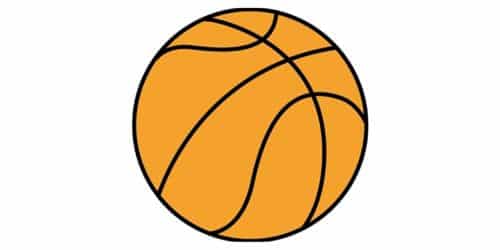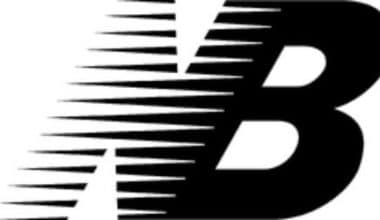Seek the assistance of a skilled designer if you need a basketball logo that will turn heads. A memorable logo tells customers what your company stands for, encourages them to buy from you again, and helps new customers decide what to buy. On the other hand, basketball legends is a fun activity for any number of players, whether two or more. There are opportunities to form teams and take part in gaming competitions. In addition, all of the information is conveyed in a logo’s form, size, color scheme, and other aesthetic details. In this article, we will be discussing the duke, NBA, Gonzaga, and the KY basketball logo.
Duke Basketball Logo
The history of the Chasseurs Alpins, a unit of French soldiers that fought in World War I, served as the basis for the name of Duke University’s sporting teams. When the student newspaper launched a naming contest in 1921, the name “Blue Devils” garnered a lot of support. Despite the Methodist campus’s objections, the Duke basketball logo was formally adopted two years later.
Although the Duke basketball moniker was thought up in the early 1920s, the first logo featuring the Devil didn’t exist until 1936, and until 1978, the team’s logos all included a creature. Regarding the Duke Blue Devils color scheme, it stays true to the team’s name and has only ever used the colors blue and white throughout its history, with the exception of one monochromatic variation.
Brand Evolution 1936 – 1971
The Devil picture served as the primary component of the Duke basketball logo in 1936. He had a nasty grin, a thinly drawn mustache, and, of course, horns. He was turned in half. In the bottom right corner of the logo, a bold sans-serif typeface was used to spell out “Duke” in white capital letters.
When the Duke basketball logo featuring the Devil was redrawn in 1948, he was now depicted as standing on large, white letters that were bluely highlighted. The creature was wearing a white letter “D” on his jersey, and he had a trident in his hands. However, the Duke basketball logo was a funny cartoon logo that looked friendlier than the last one, even though it was drawn less well.
Furthermore, the Devil was altered to stand straight with the 1995 makeover, which also changed the color scheme to monochrome. A bold outlined typeface was used for the lettering, which was somewhat enlarged. The symbols were also moved closer together to make the text look more confident and solid.
A brand new Duke basketball logo was unveiled in 1966. The Devil was shown in a contemporary, attractive image with fluid, fashionable lines. The image’s primary hue was blue, and all of the tiny accents—white—and the elaborate insignia looked stunning in this color scheme. The creature’s rounder head features counterbalanced its pointy horns and keen earth. His evil grin is also a symbol of the team’s personality because it makes people think of power and danger.
Brand Evolution Continues 1971- Till Date
The Duke basketball logo was drawn at full height in the 1971 redesign, with more details added to his form and a flame-like outline surrounding his body. With the addition of more parts of the team’s visual identity, the blue and white color scheme continued to create a contrast between a cold and warm feeling. This was the last official logo for the team that had the Devil on it. It was used until 1978.
However, at the end of the 1970s, the team makes the decision to entirely alter its approach to visual identity design. It gets rid of the Devil from its logo and replaces it with a distinctively stylized letter “D” in blue. A white, concave hexagon with a pointed top and bottom was visible inside the letter. It has a gem-like appearance and exudes class and style. The logo is created using a different color scheme for each sport, however, this has no bearing on how easily it can be recognized or how it looks.
What Is a Basketball Game About?
Basketball is a game that is often played inside between two teams of five players each. By attempting to hurl the ball through the opposing team’s goal, an elevated horizontal hoop and net known as a basket, each team attempts to score.
Furthermore, basketball, the only significant sport with purely American roots, was created by James Naismith (1861–1939) on or around December 1, 1891, at the International Young Men’s Christian Association (YMCA) Training School in Springfield, Massachusetts (now Springfield College), where Naismith was a physical education instructor.
Naismith utilized two half-bushel peach baskets as goals for the first basketball game in 1891, giving the game its name. The students had a lot of energy. William R. Chase scored the sole goal in that illustrious game with a midcourt shot after lots of running and shooting. As word of the newly created game spread, other associations contacted Naismith for a copy of the rules, which were then printed in the Triangle, the YMCA Training School’s campus newspaper, on January 15, 1892.
Although basketball is traditionally a winter sport, it is played year-round, frequently informally between two or more players, on summer playgrounds, in municipal, industrial, and religious halls, in school yards and drives, and in summer camps. Basketball programs are offered to kids younger than high school age by numerous grammar schools, youth organizations, municipal leisure centers, churches, and other organizations. In 1950, Scranton, Pennsylvania native Jay Archer created “biddy” basketball for kids under the age of 12, using a scaled-down court and equipment.
A basketball flies over the net during a match in a professional arena.
What Are the 5 Rules of Basketball?
Basketball is a game that is becoming increasingly prominent in modern sports. It is a team sport that gets underway with games in many well-known leagues. There are now several cups held for the sport as a sign of its growing popularity. However, basketball games are held at the league’s facilities. In addition, here are the five basketball rules that you must understand
#1. Each Team Is Limited to Five Players on the Court
Each team is allowed to deploy only five players for each game on the field. The rule is applicable to all popular and professional basketball competitions, including the NBA, NCAA, and WNBA.
If a team violates the primary rule, they forfeit possession of the ball. When substitute players enter the field and other players don’t vacate the court in time, the regulation is occasionally broken.
#2. You Should Outscore Your Opponent
If you want to win the game, your score needs to be higher than the opponent’s goals on the field. There will be two or three points that could be equivalent to field goals.
Three points are awarded for field goals made from beyond the arc. In addition, field goals are worth it for jump shots, layups, slam drunks, and tip-ins.
#3. The Goal Must Occur Within The Shot Clock
The team that is given possession is given the opportunity to shoot the ball for a brief period of time. In competitions like the NBA and WNBA, the possession duration is 24 seconds. For NCAA teams, the time limit is 30 seconds. The shot clock, which is positioned around the hoop on either side, shows the countdown on the court. In addition, after the shot clock expires, the opposing team loses possession of the ball and switches to the defensive team.
#4. Dribbling the Ball Forward
Basketball players can only move the ball up or down the court by passing or dribbling while doing so. If a player stops dribbling and does not restart, they must pass the ball or shoot. The attacking position player pauses before resuming dribbling the ball. However, if the dribbling happens before passing or shooting, the referee will call it a “double dribble,” and the ball will then go to the opposing team.
The only way to move the ball is by dribbling. If they run while holding the ball, they are traveling.
#5. For the Ball to Be Inbound the Offense Has 5 Secs
After the offensive unit makes a basket, the opposition team receives possession. One of the players must inbound the ball from a set location on the court’s sidelines before they may continue playing. Furthermore, the player who has been assigned to another squad has five seconds remaining with them. Whenever the attacking player is trying to inbound, the defender cannot contact the ball, otherwise, it is a technical foul.
Is Basketball a Pro Sport?
Jim Naismith created basketball in 1891. He created the game to be played indoors at the YMCA in the cold winters of Massachusetts. In the inaugural game, which was played with a soccer ball, two fruit baskets were used as goals.
However, the first basketball leagues were established at colleges after the sport gained popularity at the YMCA. Basketball became an Olympic sport in 1936 as it gained popularity among collegiate athletes and professional leagues were established. However, in modern times, the National Basketball Association (NBA) has become one of the most prominent professional sports leagues worldwide (National Basketball Association).
NBA Basketball Logo
In 1969, the NBA basketball team unveiled its official logo. It might be said that the rivalry between the American Basketball Association and its recently formed rival, the American Basketball Association, led to its birth. However, the iconic NBA logo has been centered on the silhouette of Jerry West, a notable LA Lakers basketball player, since 1969. Jerry West began coaching the Lakers after leaving the team to play. He is regarded as one of the most well-liked and prosperous NBA players in history.
Furthermore, the history of the NBA’s visual identity may be divided into two major time periods: the early years, from the association’s founding until 1969, and the contemporary era, from 1969 to the present. All five of the NBA’s logos that have been designed over the years have a strong basketball connection and simply express the organization’s mission.
Brand Evolution 1950- 1969
When it was first used in 1950, the NBA logo was a circle with a picture of a whole basketball inside. Its top and middle parts were covered with red letters, but its bottom part was plain. Also, the main wordmark was in the middle of the ball. “National” and “Association” were written in an arch along the stitches, and “Basketball” was written in a bold sans-serif font in a straight line. In addition, the upper parts of the wordmark were the date in bold lines.
However, the NBA basketball logo was changed to red and the lettering to white in the 1953 redesign. The ball was positioned somewhat diagonally, and the inscription had been reduced to the three letters “NBA,” which were now spelled out in legible sans-serif caps down the bottom line of the basketball logo.
Furthermore, the ball is once again white after the 1962 revision, but the stitches and letters now have a new black hue. Inside the middle portion of the basketball logo, the “NBA” wordmark was positioned diagonally from the upper left corner to the bottom right one. It was written in full capital letters and used a strong serif typeface. In addition, for seven years, the association used this logo.
Evolution Continues 1969- Till Date
The recognizable vertical NBA badge debuted in 1969 and remained unchanged until 2017. It was a rectangle with rounded sides, with the left side red and the right side blue. The middle of the NBA logo had a white silhouette of a man holding a basketball, which divided the rectangle into two sections. It was a stylized representation of the illustrious player, Jerry West. As a result, the “NBA” wordmark was positioned in the bottom left corner of the logo and was done in white, all-caps, extra-bold sans-serif text.
However, the NBA basketball logo had a facelift in 2017 that simply altered the font style, leaving all other components untouched. The latest badge version’s inscription had shorter lines, narrower letter forms, and the clean, clear cuts of a classic sans-serif typeface.
Alan Siegel created the NBA basketball logo in 1969, which features a white silhouette of Jerry West on a red and blue background. The iconic LA Lakers basketball player has been a part of the NBA’s visual identity for more than 50 years, and Kobe Bryant was only supposed to take his position in 2020.
What Sport Takes More Skill?
Which sports are ranked as having the highest level of competence, or the particular skill set and technique needed to succeed? This ranking is based on the ratings of the success elements that website visitors think are most crucial. Tenpin The sports requiring the most ability were thought to be bowling and swimming.
The position of the list may change over time because the ratings are still being recorded (this list is dated December 2019). Despite the analysis of more than 50 of the world’s top sports, there may be others that were left out and might potentially be placed highly.
Is Basketball a Skill or a Talent?
While skills are expertise that a person obtains via learning and developing them over time, talent is described as the innate ability to perform something. So, does playing basketball well require talent or skill? So it is both.
Consider it in this manner. A talent is a quality that you are born with, such as quick-twitch muscle fibers, height, or a naturally high vertical jump. You can hone these abilities by learning techniques like rebounding (something that a naturally high jumper or someone who is tall has an advantage). To put it simply, your talent is the means through which you can put your talents to use.
In addition, basketball players frequently refer to their “skills” as “talent.” For instance, some analysts may claim that Player A is a “talented” shooter while, in reality, his shooting has been refined over many, many hours of practice, making it an acquired ability or skill.
Gonzaga Basketball Logo
The bulldog and the text are the two main components of the Gonzaga Bulldogs’ logo. But it’s important to note that the bulldog head is sometimes utilized on its own as a logo.
Meaning and Background
The primary athletic program logo was first used in 1998 and is still in use today. The bulldog’s head is depicted on the insignia from the side. The muzzle has an evil, threatening appearance. An effect that is highly desirable for sports logotypes is that the dog appears enraged and ready to attack.
The logo’s creator used a collar with pointed crimson spikes to increase its emotional impact. The color red, which is associated with fervor and anger, serves the same purpose as the collar.
“Gongaza University” is written in two lines below the bulldog head in the wordmark logo. Each phrase is presented in a unique type and color. The word “Gongaza” is capitalized and larger. It is white with a blue and red edge. Below that, in the word “University,” is a blue outline.
The Gonzaga Bulldogs logo should employ the colors listed below in accordance with the Visual Identity and Graphics Standards Guide, which was published in 2017:
The most successful of its programs, the institution has been especially proud of its men’s basketball team. The McCarthey Athletic Center has served as the team’s home arena for more than 15 years. The Bulldogs have participated in 16 straight NCAA competitions. Furthermore, they attained the top spot in both of the major polls for the 2012–13 season.
What Sport Is the Hardest?
Water polo. This Olympic sport, which is sometimes disregarded in discussions, is recognized as the most difficult in the world. Water polo is played in the water, much like land-based handball, which was not too far from the list itself. Furthermore, polo is very physical, with lots of kicking and grabbing going on below the surface and all kinds of sneaky strikes in the water. Similarly, polo obtains a boost in skill since the game itself is reinforced by the necessity to avoid drowning, just like ice hockey did when it was played on ice.
Furthermore, it is frequently forgotten that players must travel through the water quickly and forcefully, and more significantly, that they are not allowed to contact the ground. You’ll understand why water polo scored so highly for endurance if you go to your neighborhood pool and tread water for more than 30 minutes, then picture playing a hard contact sport in that time. It is regarded as a minority sport, but is incredibly common in eastern Europe and is undoubtedly the most difficult sport in the world.
What Sport Makes You Smarter?
Tennis. Tennis games sharpen players because they need them to identify the flaws of their opponents and modify their strategy accordingly. In addition, tennis also puts a strain on your brain, which forces it to expand and results in the formation of new neural connections that increase your intelligence.
However, lawn tennis, which is played on a court outside, and table tennis, which is played indoors, are two of the most well-known sports. Players must develop their ability to measure activity quickly and accurately for both games. They are incredibly interesting games that, especially in lawn tennis, require quick mental calculations, hand-eye coordination, attention, and movement.
KY Basketball Logo
The University of Kentucky’s sports teams are called the Kentucky Wildcats. There are nine men’s and ten women’s teams that compete in basketball, soccer, cross country, swimming, diving, and other sports.
Furthermore, all of the program’s teams compete in the National Collegiate Athletic Association’s First Division, and it is one of the original members of the Southeastern Conference.
Kentucky Wildcats: Who Are They?
The intercollegiate athletic team from the University of Kentucky is known as the Kentucky Wildcats. The program has 19 men’s and women’s teams who compete in a variety of sports as members of the National Collegiate Athletic Association’s First Division.
KY Basketball Logo Evolution 1973- Till Date
The Kentucky (KY) state outline is depicted in turquoise on the original basketball logo from 1973. They have affixed a lynx-like wildcat’s head to the center of it. It has elements of aggression and malice. However, the letters “U” and “K” (for “University of Kentucky”) are written one on top of the other in blocky serif letters in the KY basketball logo. However, the letter “U” was a little bit above and to the left of the letter “K,” and they were both dark blue with a black outline. An illustration of an orange-furred wildcat poised to grasp the writing served as the finishing touch.
The KY basketball logo resembles the former logo’s two letters in many ways. The color palette was also modified, the wildcat was gone, and the letters were significantly wider. The outside edge of the KY basketball logo was replaced with a mixture of white and blue as the blue faded to a softer tint.
Furthermore, the University of Kentucky’s collegiate sports team competes as the Kentucky Wildcats. Throughout a large portion of the club’s history, the university’s female athletes and women’s teams were referred to as “Lady Kats,” but around the middle of the 1990s, both male and female players began using the term “Wildcats.”
What Sport Is the Smartest?
Have you ever wondered which athletes are the smartest? A four-year study including nearly all sports and 58,000 American athletes was just finished by a researcher. Guess what he has decided as well? Bowlers are the sharpest athletes in America. In a series of common I.Q. tests, bowlers scored an average of 129, according to the researcher William Daley. Tennis players averaged 109 points, basketball players 105, football players 103, baseball players 101, and golfers 97, among other sports. Daley admitted to being rather surprised by the results.
This wasn’t what we expected to find, he added bluntly. However, the overwhelming evidence cannot be disregarded. When you examine bowlers individually, you find that an astounding 88 percent of them are intelligent beyond average.
Which Sport Is Best for the Brain?
According to researchers and scientists, table tennis is the best sport for your brain. This action-packed game is rewarding and hard in equal measure. Dr. Daniel Amen, a clinical neuroscientist, and psychiatrist, refers to table tennis as “The Best Brain Sport.” In Making A Good Brain Great: The Amen Clinic Program for Achieving and Sustaining Optimal Mental Performance, Dr. Amen discusses the advantages of playing a little table tennis with your brain.
However, according to Dr. Amen, daily exercise increases the hormones in the body that keep the brain young. Physical activity improves cell health and increases blood flow to the brain. What, then, makes ping pong unique among sports in terms of mental health? A game of strategy, coordination, and focus.
Basketball Legends
Here is a list of basketball legends:
#1. Abdul-Jabbar, Kareem
Is it just that the tenth-best player in NBA history is also the league’s all-time leading scorer? Indeedy. Even though Kareem scored a staggering 38,387 points during his playing career, I find it impossible to ignore the reality that the two greatest point guards of all time, Oscar Robertson and Magic Johnson, passed to him frequently. Additionally, the fact that he has been playing in the NBA for about 10,000 years inflates his career totals. (Or twenty, whatever.) The sky hook, one of the most beautiful shots the game has ever seen, was developed by him, and he was an incredible force that controlled the sport for two decades. Additionally, he battled Bruce Lee in Game of Death and was amusing in Airplane!, making him the person on our list with the highest cool factor.
#2. Tim Douglas
During the first half of Game 4 of the NBA Finals in Miami on June 12, 2014, San Antonio Spurs forward Tim Duncan successfully blocked a shot to the basket by Miami Heat center Chris Bosh.
However, despite being a longtime Seattle sports fan, I briefly loved the late 1990s and early 2000s Spurs teams. By the third quarter, most viewers were dozing, yet Tim Duncan’s bank shot was often lost in the 78-71 final score. Shaquille O’Neal called Duncan “The Big Fundamental” during his prime. His four titles, 14 All-Star Games, and two NBA MVP awards prove his talent, despite his unimaginative playing style and quiet nature.
#3. O’Neal Shaquille
Shaquille O’Neal is at the other extreme of the “attractive play” range from Duncan. Shaq frequently used his enormous bulk (7’1″ and 315 pounds) to muscle his way to the basket, unlike Timmy, who would use his excellent footwork to maneuver around an opponent in the post. When he arrived, he would seal the deal with a thunderous dunk, a surefire tactic that allowed O’Neal to lead the NBA in field goal percentage ten times throughout his career. But O’Neal wasn’t just all muscle; despite being a huge man, he was remarkably agile and possessed a great touch with his close-range jump shots. However, his free-throw shooting wasn’t very good.
#4. Louie Bird
Don’t be misled by Larry Bird’s modest small-college background and his moniker as a “Hick from French Lick”; he was one of the NBA’s best smack-talkers and hardest rivals. The extremely self-assured Bird had possibly the quickest release of any basketball player in history, and he frequently informed his opponent that the shot was going in as soon as it left his hands. In his 13-year career, which was cut short by injuries, he amassed three championship rings and 12 All-Star appearances. Furthermore, his rivalry with Magic Johnson throughout the 1980s helped basketball reach an unheard-of level of national popularity that the sport has never recovered from (spoiler alert: you’ll see him a little later on this list).
Russell was the best NBA winner. In 12 of his 13 seasons with the Celtics, he won a title. Even if there were 8 to 14 teams in the NBA at the time, Russell’s historic exploits are not diminished. Before Russell joined the club, the Celtics had never made it to the championship series. Russell turned the Celtics into the NBA’s most successful team in his debut season. In addition, he didn’t make this list through nebulous “winningness.” Russell reinvented shot blocking and was a top defender. He also averaged 22.5 rebounds per game.
#5. Theodore Robertson
Seriously, what a jerk. Though I was born too late to have witnessed his career firsthand, I can only imagine the incredibleness of his stat line and wish that I could travel back in time to do so. “The Big O” averaged 30.8 points, 12.5 rebounds, and 11.4 assists per game in 1961–1962. Not only did the 12-time All-Star have incredible success on the court, but he also played a key role in the advent of true free agency in the NBA by filing a landmark antitrust complaint.
#6. Wilt Chamberlain
Even though Chamberlain played during a time when most players were significantly smaller and basketball didn’t draw the same kind of athletic miracles as it does today, he still deserves a spot in the top five. Furthermore, chamberlain had the best four-scoring averages in NBA history in his first four seasons as a professional. On March 2, 1962, he set an NBA record by scoring 100 points in a game. This was the crowning achievement of his scoring career. Chamberlain was the only player in NBA history to play more minutes per game than Bill Russell while also averaging more rebounds per game than Russell (22.9). (45.8).
In 1970, a season in which Chamberlain was limited to just 12 regular-season games due to injury, he was the only non-All-Star in his 14-year career. Upon his comeback, though, he managed to will his team to the NBA Finals.
What Sport Makes You the Fastest?
An expert team at ESPN analyzed 60 sports to come up with this ranking. What other sport needs speed more than the track and field event of pure sprinting? On this list are also many individual sports where the goal is to move as quickly as you can.
Fast-paced ice hockey is the most popular team sport. Middle-distance running ranking so high on the list—even higher than sprint cycling—is unexpected. Alpine skiing might not belong on this list because gravity alone, not the athlete, determines the event’s speed. Skydiving is not practiced here for the same reason. Check out rankings for additional fitness-related categories.
| Rating | Sports | Rating(/10) |
| 1 | Track and Field: Sprints | 9.88 |
| 2 | Speed Skating | 8.88 |
| 3 | Swimming (all strokes): Sprints | 7.88 |
| 4 | Ice Hockey | 7.75 |
| 5 | Track and Field: Middle Distance | 7.75 |
| 6 | Cycling: Sprints | 7.5 |
| 7 | Skiing: Alpine | 7.38 |
| 8 | Basketball | 7.25 |
| 9 | Soccer | 7.25 |
| 10 | American Football | 7.13 |
Which Sport Has the Most Power?
This ranking is based on the opinions of website visitors who rated the success elements they felt were most crucial. The two sports with the highest ratings for strength and power were weightlifting and gymnastics. That is reasonable.
The position of the list may change over time because the ratings are still being recorded (this list is dated December 2019). However, despite the analysis of more than 50 of the world’s top sports, there may be others that were left out and might potentially be placed highly.
| Ranking | Sports | Rating |
| 1 | Weightlifting | 86.7 |
| 2 | Gymnastics | 84.4 |
| 3 | Water Polo | 82.5 |
| 4 | Wrestling | 81.4 |
| 5 | American Football | 80.7 |
Conclusion
The appropriate basketball logo colors might help you stand out from the competition and draw in the kind of clients you want. Of course, the inverse is also true; the incorrect ingredients can produce the wrong result.
Similar Posts
- HOW TO GET SMARTER: 15 Proven Habits that Work EverydayNFL Pension: The 2023 Ultimate Guide (Updated)
- MARK CUBAN NET WORTH 2023: How Did He Get So Rich?
- TUTORIAL BUSINESS: Smart tips to launch your tutorial business online and offline
- NFL Pension: The 2023 Ultimate Guide (Updated)






